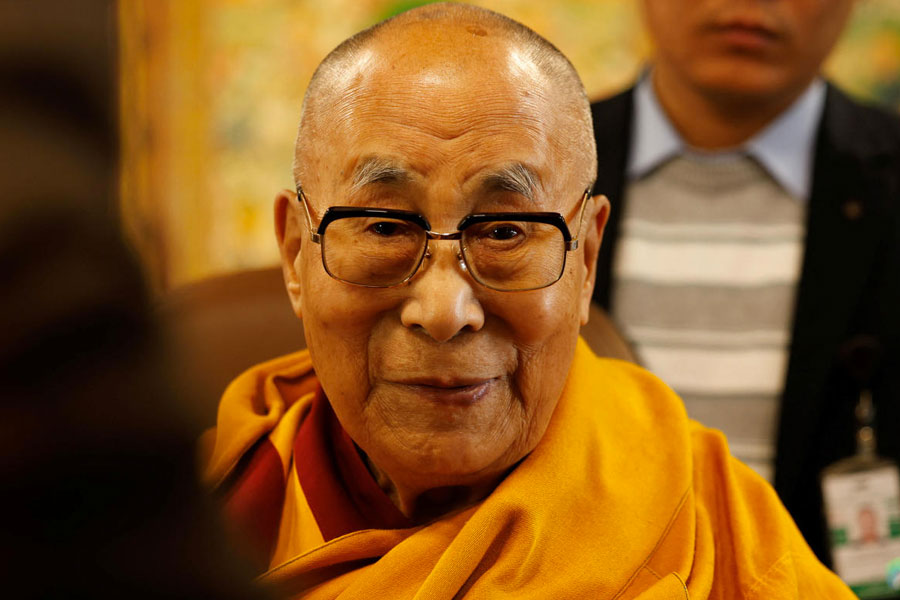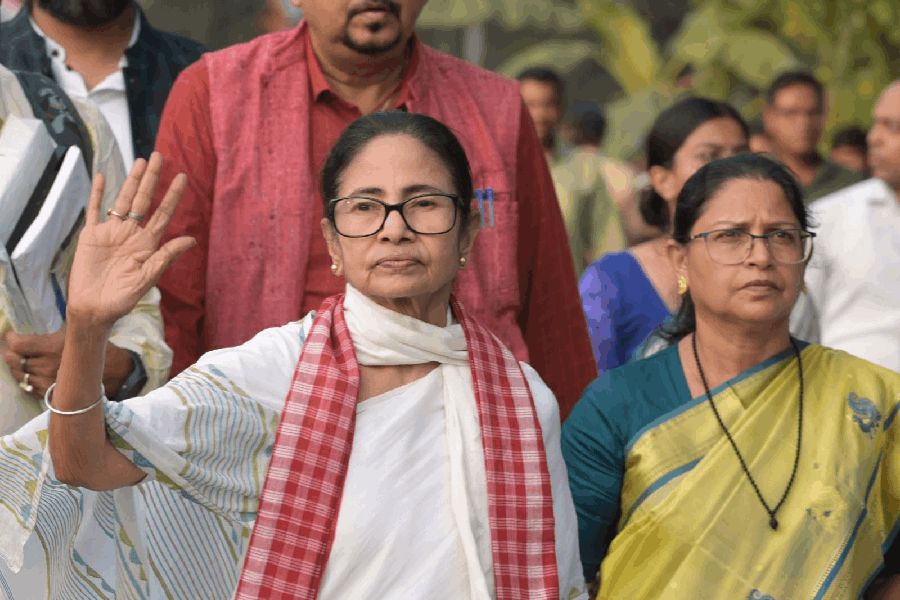Freedom or autonomy — this choice has come up for reckoning again for the Tibetan exiles, with discussions over the Dalai Lama’s succession dominating the discourse over the past week.
The Dalai Lama’s official position since 1974 has been Umaylam or “The Middle Way Approach for Genuine Autonomy for the Tibetan People” within China.
But this does not cut ice with many of the Tibetans who had poured in from across the world to celebrate the Tibetan pontiff’s 90th birthday in Dharamshala on July 6.
One of the strongest voices for total independence from China is that of the Tibetan Youth Congress (TYC).
Its general secretary Sonam Tsering, who happens to be a musician, fled Tibet on foot at the age of 10 in 2003, when he was sent by his parents to be educated under the Dalai Lama’s Tibetan pedagogy rather than the Chinese system of schooling.
He has not spoken to his parents since he became a TYC office-bearer in 2019, fearing the authorities in Tibet might force them to publicly denounce him.
Tsering performed at a concert — one of the many cultural events and community gatherings of the Tibetan diaspora last week — in McLeodganj on Friday. Many of the performances ended with the audience, mainly of third or fourth-generation Tibetan exiles, chanting “China, get out of Tibet!”
Tsering told The Telegraph that the tracks performed were compositions by musicians in Tibet, some of whom have been prosecuted for their secessionist lyrics.
“Because of the courageous acts of people inside Tibet, (these) activists, patriotic singers, teachers are a source of inspiration for people outside Tibet…. Songs of rangzen or independence are still sung (even by Tibetan refugees born outside the region),” he said.
While the devotion to the Dalai Lama is absolute for most Tibetans, Tsering explained why his group differed with him on Umaylam.
“His Holiness is genuine, he promotes peace and harmony around the world. But we (the youth) don’t trust China,” he said.
Tsering said: “Their constitution is not flexible enough to accommodate different ideas and cultures. They want to make everything in Chinese characteristics. How can we preserve our culture within their framework?”
Umaylam led to the initiation of dialogue between the Dalai Lama’s representatives and the Chinese government in 1978. After much back and forth and periods of inactivity, the dialogue resumed in 2002.
In 2008, during violent protests in Tibet, the Tibetan exiles submitted a Memorandum on Genuine Autonomy for the Tibetan People. This called for “11 basic needs for self-governance for the Tibetan people”.
These were: “Language, culture, religion, education, environmental protection, utilisation of natural resources, economic development and trade, public health, public security, regulation (of) population migration, (and) cultural, educational and religious exchanges with other countries.”
China reportedly saw the migration clause as an attempt to expel Han Chinese from the region. Talks have been stalled since 2010.
The Central Tibetan Administration (CTA) is mindful of the political division among Tibetans and has been trying to get both the pro-independence lobby and the pro-autonomy lobby on the same platforms.
“When His Holiness is here, everybody embraces him and follows him. When His Holiness is alive, we are making attempts to reach out to Tibetans as much,” the CTA’s Sikyong or President, Penpa Tsering, told this newspaper last week.
A facet of this effort to bring all Tibetans on board is the CTA’s emphatic push for the recognition of Tibet’s distinct political history.
“On one hand they say Tibet is part of the People’s Republic of China, on the other hand they say they appreciate negotiations between His Holiness’s representatives and the Chinese government. These two contradict each other,” the Sikyong said.
“You are removing the very ground for negotiation; that’s why we are seeking recognition of the historical status of Tibet, which we did manage through the USA’s Resolve Tibet Act (passed last year), which questions China’s disinformation on Tibetan history -- that Tibet has been part of China since ancient times….
“This is common ground for those (who want) independence, as well as those (in favour of) autonomy within the Tibetan community.”
On the trek up from the Dalai Lama’s temple, Tenzin Geyche was trudging along without an umbrella in the rain. He was one of the pioneers — Tibetans who had moved to India before the Dalai Lama’s flight in 1959.
“My father was a historian and we came to India in the late 1940s…. Most of us hope to return to Tibet some day but I don’t see any solution soon,” he said.
“I also believe that we can’t be a part of China unless it changes to become a truly democratic country. Proper democratic countries give the right to even secede. Just now in Hong Kong, the last remaining opposition party has been forced to disband. I can’t go live in such a country.”
Geyche began his career as a teacher and went on to work in the office of the Dalai Lama in the 1960s — the early years of the government-in-exile.
“Some people may say the middle way is OK only because the Dalai Lama says so. Otherwise, no one really wants to be part of China,” he said.
During the Dalai Lama’s birthday celebrations, pro-autonomy think tanks like the Centre for Middle-Way Initiative and the Global Tibetan People’s Movement for Middle Way Approach distributed pamphlets at the venue, quoting him on why Umaylam is necessary.
Hand-knit woollens seller Tsomo Dorje’s shop is in a market just opposite the temple. Like Sonam Tsering, he had trekked across the Himalayas as a child to come to India, 25 years ago.
“For years, it was hard to contact home. Then the (Chinese) app WeChat came and I reconnected with my parents and relatives after so long,” he said.
“In 2020, after WeChat got banned here, all this stopped. Now I request foreign tourists to let me call my family in Tibet on their WeChat.”
Dorje added: “I long to go back, but I can’t. Not as long as we are part of China. Freedom means everything.”











